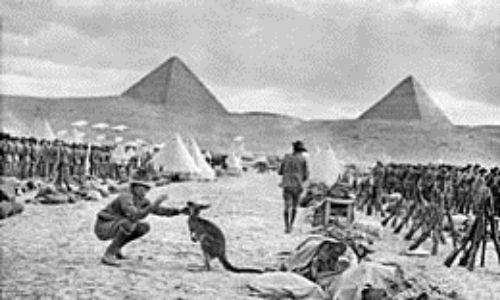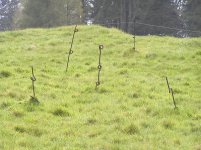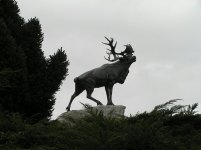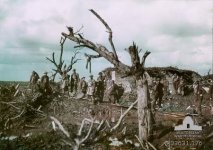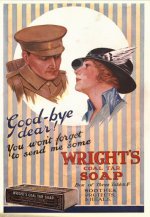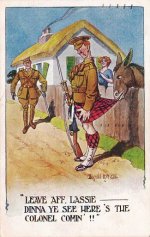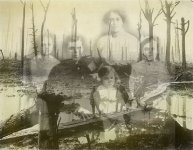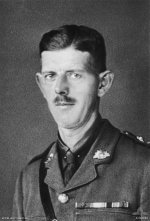I'll give it a try, Louis.:smile2: It looks to me to be the workhorse of the RFC, the BE2c. The lines of the wings and horizontal tail planes look correct for the type. The engine profile, and upperwing cutout look right for the BE as well. Anyway, that's my bet.:wink2:^&grin -- AlI bet Al could identify the aircraft for us!:wink2:
You are using an out of date browser. It may not display this or other websites correctly.
You should upgrade or use an alternative browser.
You should upgrade or use an alternative browser.
WW1 Pic Of the Day (1 Viewer)
- Thread starter Rob
- Start date
Jack
Major
- Joined
- Dec 16, 2011
- Messages
- 6,347
I bet Al could identify the aircraft for us!:wink2:
Louis
Hardly surprising that no one bet against Al!
Jack
Isandlwana
Sergeant
- Joined
- Dec 2, 2007
- Messages
- 645
Isandlwana
Sergeant
- Joined
- Dec 2, 2007
- Messages
- 645
TomNT
Lieutenant Colonel
- Joined
- May 7, 2011
- Messages
- 7,986
Nice pic mate and I wonder what happened to the wallaby?? Did he/she stay in Egypt and meet a bad fate or come back to Oz with the diggers?
Tom
Obee
Major
- Joined
- Aug 27, 2009
- Messages
- 6,156
waynepoo
Colonel
- Joined
- Jan 3, 2012
- Messages
- 9,729
Good question mate to which I have no answer, but I think it's a Roo not a Wallaby.Nice pic mate and I wonder what happened to the wallaby?? Did he/she stay in Egypt and meet a bad fate or come back to Oz with the diggers?
Tom
Wayne.
TomNT
Lieutenant Colonel
- Joined
- May 7, 2011
- Messages
- 7,986
Good question mate to which I have no answer, but I think it's a Roo not a Wallaby.
Wayne.
Must be that "scale" issue again mate, could have swore it was a wallaby! {sm4}
Tom
waynepoo
Colonel
- Joined
- Jan 3, 2012
- Messages
- 9,729
Victoria Cross Laureate of the First A.I.F,
Thomas Leslie 'Jack' Axford VC MM 16th Battalion.
'On 4 July 1918 during the attack at Vaire and Hamel Woods, France, when the
advance of the adjoining platoon was being delayed in uncut wire and machine-gun
fire, and his company commander had become a casualty, Lance-Corporal Axford
charged and threw bombs amongst the enemy gun crews. He then jumped into the
trench, and charging with his bayonet killed ten of the enemy and took six prisoners.
He threw the machine-guns over the parapet and the delayed platoon was able to
advance. He then rejoined his own platoon and fought with it during the remainder of
the operations.'
Wayne.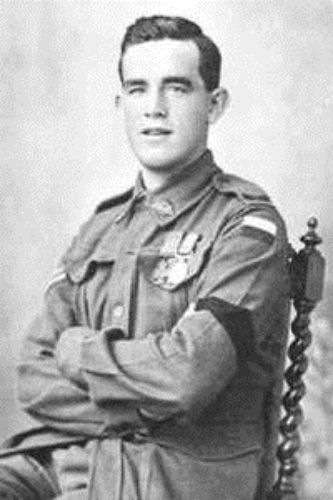
Thomas Leslie 'Jack' Axford VC MM 16th Battalion.
'On 4 July 1918 during the attack at Vaire and Hamel Woods, France, when the
advance of the adjoining platoon was being delayed in uncut wire and machine-gun
fire, and his company commander had become a casualty, Lance-Corporal Axford
charged and threw bombs amongst the enemy gun crews. He then jumped into the
trench, and charging with his bayonet killed ten of the enemy and took six prisoners.
He threw the machine-guns over the parapet and the delayed platoon was able to
advance. He then rejoined his own platoon and fought with it during the remainder of
the operations.'
Wayne.

Rob
Four Star General
- Joined
- May 18, 2005
- Messages
- 26,622
Two of the first VC's of WW1 won at Mons;
Maurice Dease VC

Nimy Bridge was being defended by a single company of Royal Fusiliers and a machine-gun section with Dease in command. The gun fire was intense, and the casualties very heavy, but the lieutenant went on firing in spite of his wounds, until he was hit for the fifth time and was carried away.
Though two or three times badly wounded he continued to control the fire of his machine guns at Mons on 23rd Aug., until all his men were shot. He died of his wounds.
—London Gazette, 16 November 1914[2]
Dease won the first Victoria Cross to be awarded in the Great War, 1914–1918, and he also won it on the first day of the first significant British encounter in that war. Dease is buried at St Symphorien military cemetery, Belgium.[1]
Sidney Godley VC

Godley was 25 years old, and a private in the 4th Battalion, The Royal Fusiliers, British Army, during the Battle of Mons in the First World War when he performed an act for which he was awarded the Victoria Cross. On 23 August 1914, at Mons, Belgium on the Mons-Condé Canal, Lieutenant Maurice Dease and Sidney Godley offered to defend the Nimy Railway Bridge while the rest of the British and French armies retreated for a better defence line on the River Marne. When Lieutenant Dease had been mortally wounded and killed, Private Godley held the bridge single-handed under very heavy fire and was wounded twice. Shrapnel entered his back when an explosion near him went off, and he was shot in the head. Despite his injuries he carried on the defence of the bridge while his comrades escaped. His citation read:
For coolness and gallantry in fighting his machine gun under a hot fire for two hours after he had been wounded at Mons on 23rd August.[4]
Godley defended the bridge for two hours, until he ran out of ammunition.[5] His final act was to dismantle the gun and throw the pieces into the canal. He attempted to crawl to safety, but advancing German soldiers caught him and took him to a prisoner of war camp. His wounds were treated, but he remained in camp until the Armistice. Originally it was thought that he had been killed, but some time later it was found that he was a prisoner of war in a camp called Delotz at Dallgow-Döberitz. It was in the camp that he was informed that he had been awarded the Victoria Cross. Godley left the camp in 1918 after the guards fled their posts. He received the actual medal from King George V, at Buckingham Palace, on 15 February 1919.[3]
On 19 July 2012 his medals were sold at auction for £276,000.[6]
Maurice Dease VC

Nimy Bridge was being defended by a single company of Royal Fusiliers and a machine-gun section with Dease in command. The gun fire was intense, and the casualties very heavy, but the lieutenant went on firing in spite of his wounds, until he was hit for the fifth time and was carried away.
Though two or three times badly wounded he continued to control the fire of his machine guns at Mons on 23rd Aug., until all his men were shot. He died of his wounds.
—London Gazette, 16 November 1914[2]
Dease won the first Victoria Cross to be awarded in the Great War, 1914–1918, and he also won it on the first day of the first significant British encounter in that war. Dease is buried at St Symphorien military cemetery, Belgium.[1]
Sidney Godley VC

Godley was 25 years old, and a private in the 4th Battalion, The Royal Fusiliers, British Army, during the Battle of Mons in the First World War when he performed an act for which he was awarded the Victoria Cross. On 23 August 1914, at Mons, Belgium on the Mons-Condé Canal, Lieutenant Maurice Dease and Sidney Godley offered to defend the Nimy Railway Bridge while the rest of the British and French armies retreated for a better defence line on the River Marne. When Lieutenant Dease had been mortally wounded and killed, Private Godley held the bridge single-handed under very heavy fire and was wounded twice. Shrapnel entered his back when an explosion near him went off, and he was shot in the head. Despite his injuries he carried on the defence of the bridge while his comrades escaped. His citation read:
For coolness and gallantry in fighting his machine gun under a hot fire for two hours after he had been wounded at Mons on 23rd August.[4]
Godley defended the bridge for two hours, until he ran out of ammunition.[5] His final act was to dismantle the gun and throw the pieces into the canal. He attempted to crawl to safety, but advancing German soldiers caught him and took him to a prisoner of war camp. His wounds were treated, but he remained in camp until the Armistice. Originally it was thought that he had been killed, but some time later it was found that he was a prisoner of war in a camp called Delotz at Dallgow-Döberitz. It was in the camp that he was informed that he had been awarded the Victoria Cross. Godley left the camp in 1918 after the guards fled their posts. He received the actual medal from King George V, at Buckingham Palace, on 15 February 1919.[3]
On 19 July 2012 his medals were sold at auction for £276,000.[6]
waynepoo
Colonel
- Joined
- Jan 3, 2012
- Messages
- 9,729
Victoria Cross Laureate of the first A.I.F.
Pte. Robert Matthew Beatham VC. 8th Battalion. (Posthumous)
'Born in England, Robert Beatham came to Australia as a teenager. He enlisted early in 1915 and
accompanied the 8th Battalion to France a year later. He was wounded twice: at Pozieres in 1916 and
near Passchendaele the following year.
The day after the Australians successful advance on 8 August 1918, Beatham's battalion was thrown
into a further battle which proved very costly. When held up by machine-guns, Beatham attacked four
posts, killing or capturing their crews. He had already been wounded and, while attacking another
gun, he was killed.
Wayne.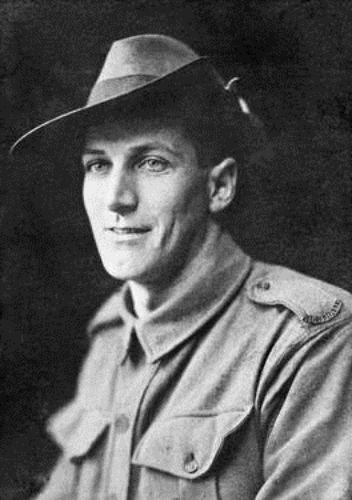
Pte. Robert Matthew Beatham VC. 8th Battalion. (Posthumous)
'Born in England, Robert Beatham came to Australia as a teenager. He enlisted early in 1915 and
accompanied the 8th Battalion to France a year later. He was wounded twice: at Pozieres in 1916 and
near Passchendaele the following year.
The day after the Australians successful advance on 8 August 1918, Beatham's battalion was thrown
into a further battle which proved very costly. When held up by machine-guns, Beatham attacked four
posts, killing or capturing their crews. He had already been wounded and, while attacking another
gun, he was killed.
Wayne.

Good golly, that's a lot of money and one would hope the medals went to a museum, but I'm guessing at that price the medals went to a private buyer. What an honor to be able to own such an important piece of history. -- AlTwo of the first VC's of WW1 won at Mons;
Maurice Dease VC

Nimy Bridge was being defended by a single company of Royal Fusiliers and a machine-gun section with Dease in command. The gun fire was intense, and the casualties very heavy, but the lieutenant went on firing in spite of his wounds, until he was hit for the fifth time and was carried away.
Though two or three times badly wounded he continued to control the fire of his machine guns at Mons on 23rd Aug., until all his men were shot. He died of his wounds.
—London Gazette, 16 November 1914[2]
Dease won the first Victoria Cross to be awarded in the Great War, 1914–1918, and he also won it on the first day of the first significant British encounter in that war. Dease is buried at St Symphorien military cemetery, Belgium.[1]
Sidney Godley VC

Godley was 25 years old, and a private in the 4th Battalion, The Royal Fusiliers, British Army, during the Battle of Mons in the First World War when he performed an act for which he was awarded the Victoria Cross. On 23 August 1914, at Mons, Belgium on the Mons-Condé Canal, Lieutenant Maurice Dease and Sidney Godley offered to defend the Nimy Railway Bridge while the rest of the British and French armies retreated for a better defence line on the River Marne. When Lieutenant Dease had been mortally wounded and killed, Private Godley held the bridge single-handed under very heavy fire and was wounded twice. Shrapnel entered his back when an explosion near him went off, and he was shot in the head. Despite his injuries he carried on the defence of the bridge while his comrades escaped. His citation read:
For coolness and gallantry in fighting his machine gun under a hot fire for two hours after he had been wounded at Mons on 23rd August.[4]
Godley defended the bridge for two hours, until he ran out of ammunition.[5] His final act was to dismantle the gun and throw the pieces into the canal. He attempted to crawl to safety, but advancing German soldiers caught him and took him to a prisoner of war camp. His wounds were treated, but he remained in camp until the Armistice. Originally it was thought that he had been killed, but some time later it was found that he was a prisoner of war in a camp called Delotz at Dallgow-Döberitz. It was in the camp that he was informed that he had been awarded the Victoria Cross. Godley left the camp in 1918 after the guards fled their posts. He received the actual medal from King George V, at Buckingham Palace, on 15 February 1919.[3]
On 19 July 2012 his medals were sold at auction for £276,000.[6]
waynepoo
Colonel
- Joined
- Jan 3, 2012
- Messages
- 9,729
Victoria Cross Laureate of the First A.I.F.
2nd Lt. Frederick Birks. VC. MM. 6th Battalion. (Posthumous)
'For most conspicuous bravery in attack on 20 September 1917 when accompanied only by a corporal,
he rushed a strong point which was holding up the advance.
The corporal was wounded by a bomb, but 2nd Lt. Birks went on by himself killed the remainder of the
enemy occupying the position, and captured a machine-gun.
Shortly afterwards he organised a small party and attacked a strong point which was occupied by about
twenty-five of the enemy, of whom many were killed and an officer and fifteen men captured.
During the consolidation 2nd Lt. Birks did magnificent work in reorganising parties of other units which
had been disorganised during operations.
By his wonderful coolness and personal bravery 2nd Lt. Birks kept his men in splendid spirits throughout.
He was killed at his post by a shell whilst endeavouring to extricate some of his men who had been buried
by a shell.
Wayne.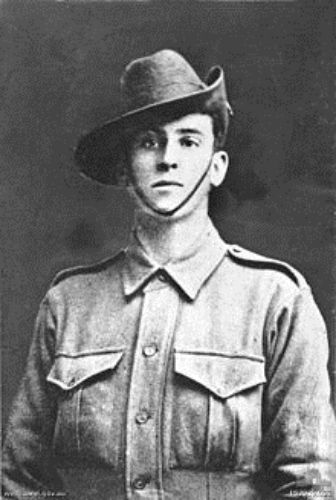
2nd Lt. Frederick Birks. VC. MM. 6th Battalion. (Posthumous)
'For most conspicuous bravery in attack on 20 September 1917 when accompanied only by a corporal,
he rushed a strong point which was holding up the advance.
The corporal was wounded by a bomb, but 2nd Lt. Birks went on by himself killed the remainder of the
enemy occupying the position, and captured a machine-gun.
Shortly afterwards he organised a small party and attacked a strong point which was occupied by about
twenty-five of the enemy, of whom many were killed and an officer and fifteen men captured.
During the consolidation 2nd Lt. Birks did magnificent work in reorganising parties of other units which
had been disorganised during operations.
By his wonderful coolness and personal bravery 2nd Lt. Birks kept his men in splendid spirits throughout.
He was killed at his post by a shell whilst endeavouring to extricate some of his men who had been buried
by a shell.
Wayne.

Last edited:
waynepoo
Colonel
- Joined
- Jan 3, 2012
- Messages
- 9,729
Victoria Cross Laureate of the first A.I.F.
2nd Lt. Arthur Seaforth Blackburn VC,CMG,CBE,ED 10th Battalion.
On 23 July 1916, at Pozieres, France, 23 year old 2nd Lt. Blackburn led an attack for
which he was awarded the Victoria Cross. Blackburn was directed with 50 men to drive
the enemy from a strong point. By great determination he captured 250 yards of trench,
after personally leading four separate parties of bombers against it, many of whom
became casualties. Then after crawling forward with a sergeant to reconnoitre,
he attacked again, and seized another 120 yards of trench to establish communication
with the battalion on his left.
Wayne.
2nd Lt. Arthur Seaforth Blackburn VC,CMG,CBE,ED 10th Battalion.
On 23 July 1916, at Pozieres, France, 23 year old 2nd Lt. Blackburn led an attack for
which he was awarded the Victoria Cross. Blackburn was directed with 50 men to drive
the enemy from a strong point. By great determination he captured 250 yards of trench,
after personally leading four separate parties of bombers against it, many of whom
became casualties. Then after crawling forward with a sergeant to reconnoitre,
he attacked again, and seized another 120 yards of trench to establish communication
with the battalion on his left.
Wayne.
Attachments
Users who are viewing this thread
Total: 2 (members: 0, guests: 2)


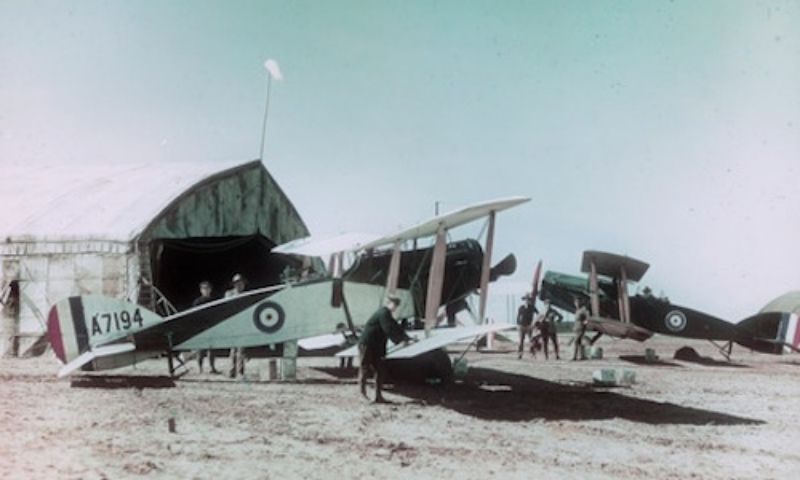

![6249669732_c25f70211a_b[1].jpg 6249669732_c25f70211a_b[1].jpg](https://forum.treefrogtreasures.com/data/attachments/104/104407-fb036528e23074393970d33156cc52a9.jpg)
![6249143797_0ba4bf479e_b[1].jpg 6249143797_0ba4bf479e_b[1].jpg](https://forum.treefrogtreasures.com/data/attachments/104/104408-35d11d4ef5acef6173a8ebb4b84fa2bd.jpg)
